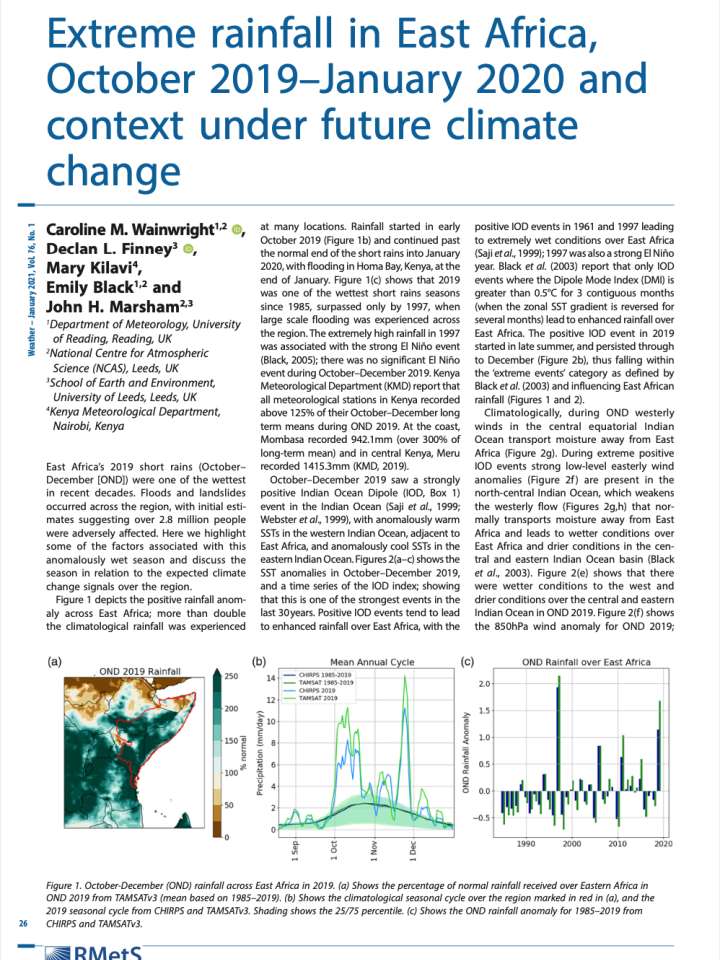Extreme rainfall in East Africa, October 2019–January 2020 and context under future climate change
This paper analyses the extreme rainfall in East Africa between October 2019 and January 2020 and contextualises it with future climate change. The 2019 October–December rains over East Africa were one of the wettest seasons on record, with many locations receiving more than double the climatological rainfall, leading to floods and landslides. The wet conditions were associated with the positive Indian Ocean Dipole event, with warm sea surface temperatures in the western Indian Ocean. Seasonal forecasts correctly predicted above average rainfall during the season. Climate model projections suggest that such events may become more frequent under future climate change.
The paper concludes that the season had many adverse impacts on society, including severe flooding that led to the destruction of property, loss of lives (both human and livestock) and crops, and displacement of people. In cereal growing regions, farmers were unable to harvest their crops; landslides and mud slides destroyed homes in West Pokot and led to loss of life, and roads and bridges were washed away in some areas, disrupting transport systems. Furthermore, the season made a major contribution to a rapid rise in Lake Victoria’s water level, and combined with above average rainfall during the 2020 long rains led to record breaking water levels there. With future projections suggesting that such seasons could become more frequent under climate change, societies should prepare and adapt for more events similar to the short rains of 2019 and January rainfall of 2020. It will be increasingly important to use forecasts in risk management to help adapt to such events, especially for the short rains, where seasonal forecasts have been shown to have higher skill.
Explore further
